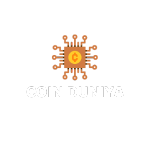Technically, a seed phrase cannot be hacked directly because it’s a series of words that only unlocks a wallet when entered in the correct order.
Still, if your seed phrase is exposed to a hacker — through malicious software, phishing scams or improper storage — they can use it to access and control your cryptocurrency wallet.
Here are the ways a seed phrase could be compromised:
- Phishing attacks: Hackers can trick you into entering your seed phrase on a fake website or app.
- Insecure backups: Storing your seed phrase in easily accessible or online locations (like cloud storage or unencrypted text files) makes it vulnerable to hacking.
- Malware: If your device gets infected with malware, it might log your keystrokes or access files where your seed phrase is stored.
- Social engineering: Hackers might attempt to gain your trust and convince you to share your seed phrase under false pretenses, claiming they need it for support or troubleshooting.
What happens if you lose a seed phrase?
Unfortunately, once the seed phrase is lost and no backups are available, there is no way to recover the wallet and the funds are considered lost forever.
Let’s dive deeper into the potential consequences of losing your seed phrase and how third-party services might help in some cases.
- No recovery in case of non-custodial wallets: Non-custodial wallets like MetaMask don’t store any information for you. If you lose your seed phrase, you lose access to the wallet and there’s no way to recover it. This means you cannot regenerate your private keys, meaning you cannot access or recover your funds.
- Possibility of recovery through a provider in case of custodial wallets: In custodial wallets, a third-party provider (like Coinbase or Binance) holds control over your private keys. In the event you lose your seed phrase, the provider may help you recover your wallet using account credentials, email recovery or other forms of authentication. However, don’t forget: “Not your keys, not your crypto.”
- Third-party wallet recovery services: Some specialized third-party services may assist in wallet recovery. These services don’t usually recover wallets without seed phrases, but they can sometimes help with key recovery if you’ve backed up your seed phrase or private keys incorrectly. Many of these services are scam-prone, so remember to thoroughly test their genuineness.
How to safely store and back up your seed phrase
Storing your wallet recovery phrase offline (e.g., in a hardware wallet) or at multiple locations are ways to safely store and back up your seed phrase.
Here are some tips to ensure your cryptocurrency wallet security:
- Offline storage: Internet-connected devices expose your seed phrases to cyber threats, so store them as physical copies in a safe deposit box or fireproof safe or write them down on paper. The risks of online attacks can also be reduced by using hardware wallets. Still, these are commercialized devices whose security depends upon the measures taken by wallet providers.
- Multisignature wallets: A multisignature wallet requires multiple private keys (and, therefore, multiple seed phrases) to authorize a transaction. For example, you could store your seed phrase in multiple locations, and to perform any action (like sending crypto), you would need access to at least two or three of them, adding a level of redundancy and making it significantly harder for someone to access your wallet with just one stolen backup of your seed phrase.
- Geographical separation of backups: The risk of losing funds is further reduced by keeping your seed phrases in separate locations, such as a personal safe, a safety deposit box in a different city or country, or entrusting a trusted individual with a copy. This redundancy ensures access to your funds even in unforeseen circumstances or emergencies.
- Regularly test and update your backups: After safely storing your seed phrase, periodically review and update your backups. Documents might deteriorate over time, and you might discover that your backup is unreadable. To ensure everything is working properly, test your recovery process regularly by recovering your wallet from the seed phrase. Additionally, update your backups to reflect any changes if you replace your wallet or devices.
- Be cautious about sharing your recovery phrase: Never share your seed phrase with someone you don’t trust completely. If you are using a hardware wallet, not even the wallet provider should know it. Similarly, customer service representatives of legitimate products and services will never ask for your seed phrase. Thus, be careful, as phishing attacks can mimic wallet interfaces, tricking you into entering your seed phrase on malicious websites or apps.
Each method provides layers of security but also comes with trade-offs regarding convenience and risk management. Therefore, it’s important for you to do your research before choosing a method that suits your needs.



A wonderful serenity has taken possession of my entire soul, like these sweet mornings of spring which I enjoy with my whole heart. I am alone, and feel the charm of existence in this spot, which was created for the bliss of souls like mine. I am so happy.
I feel that I never was a greater artist than now. When, while the lovely valley teems with vapour around me, and the meridian sun strikes the upper surface of the impenetrable foliage of my trees, and but a few stray gleams steal into the inner sanctuary.